Craters can tell scientists a lot about the surfaces of planets, moons, and other bodies. Just by determining how circular a given crater is – using pi and the crater’s perimeter and area – planetary geologists can reveal clues about how the crater was formed and the surface that was impacted.
Each year across the globe, people celebrate Pi Day. On March 14 (3/14 in the month/day date format, since 3, 1, and 4, or 3.14, are the first three significant digits of π, we sing the praises of this mathematical constant. Here at NASA, whether it’s sending spacecraft to other planets, driving rovers on Mars, finding out what planets are made of, or how deep alien oceans are, pi takes us far. Here are 18 ways that pi helps us explore space.
The above enhanced color HiRISE image shows several craters somewhere in the southern mid-latitudes of Mars. It is currently mid-winter in the Southern hemisphere, so we can observe accumulating frost (neon blues) on pole-facing slopes (i.e. south-facing) and in shadowed areas.
However, the bluish deposits and ejecta deposits associated with the smaller crater we see are not consistent with frost deposits. These materials are most likely iron-bearing minerals that have not been previously oxidized (i.e., rusted), and have only recently been exposed to the surface when this small well-preserved crater was formed. You can view the full image here.
The University of Arizona, Tucson, operates HiRISE, which was built by Ball Aerospace & Technologies Corp., Boulder, Colo. NASA’s Jet Propulsion Laboratory, a division of the California Institute of Technology in Pasadena, manages the Mars Reconnaissance Orbiter Project for NASA’s Science Mission Directorate, Washington.

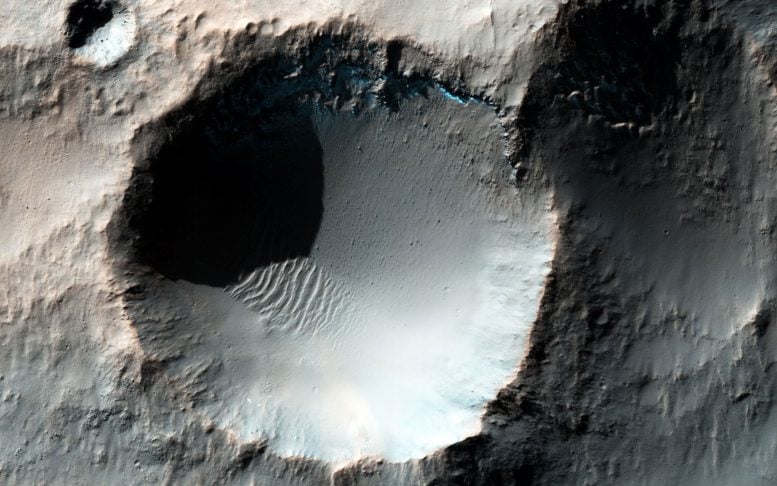

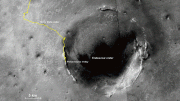
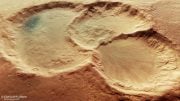

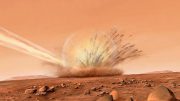
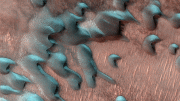
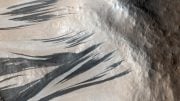
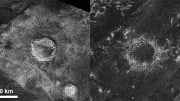
Be the first to comment on "NASA Celebrates Pi Day With MRO Crater Image"